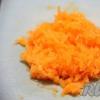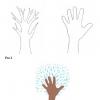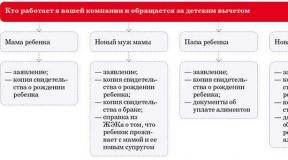". "Houston, we have left the solar system!" A spacecraft that has left the solar system
It is very difficult to leave the solar system and fly to the stars. First, after spending a lot of fuel, you need to fly above the Earth into space. In this case, your speed relative to the Earth may turn out to be zero, but if you take off on time and in the right direction, then relative to the Sun you will fly along with the Earth, with its orbital speed relative to the Sun 30 km/s.
By turning on the additional engine in time and increasing the speed by another 17 km/s relative to the Earth, relative to the Sun you will get a speed of 30 + 17 = 47 km/s, which is called the third cosmic speed. It is sufficient to leave the solar system irrevocably. But fuel for a 17 km/s burst is expensive to deliver into orbit, and no spacecraft has yet reached escape velocity or left the solar system in this way. The fastest vehicle, New Horizons, flew to Pluto, turning on an additional engine in Earth orbit, but reached a speed of only 16.3 km/s.
A cheaper way to leave the solar system is to accelerate at the expense of the planets, approaching them, using them as tugs and gradually increasing speed around each. For this you need a certain one. the configuration of the planets is in a spiral - so that, when parting with the next planet, we fly precisely to the next one. Due to the slowness of the most distant Uranus and Neptune, such a configuration occurs rarely, approximately once every 170 years. The last time Jupiter, Saturn, Uranus and Neptune aligned in a spiral was in the 1970s. American scientists took advantage of this arrangement of planets and sent spacecraft beyond the solar system: Pioneer 10 (launched on March 3, 1972), Pioneer 11 (launched on April 6, 1973), Voyager 2 "(Voyager 2, launched August 20, 1977) and Voyager 1 (Voyager 1, launched September 5, 1977).
By the beginning of 2015, all four devices had moved away from the Sun to the border of the Solar System. Pioneer 10 has a speed of 12 km/s relative to the Sun and is located at a distance of about 113 AU from it. e. (astronomical units, the average distance from the Sun to the Earth), which is approximately 17 billion km. Pioneer 11 - at a speed of 11.4 km/s at a distance of 92 AU, or 13.8 billion km. Voyager 1- at a speed of about 17 km/s at a distance of 130.3 AU, or 19.5 billion km (this is the farthest object created by people from the Earth and the Sun). Voyager 2- at a speed of 15 km/s at a distance of 107 a. e„or 16 billion km. But these devices are still very far from flying to the stars: the neighboring star Proxima Centauri is 2,000 times further away from the Voyager 1 spacecraft. And do not forget that the stars are small, and the distances between them are large. Therefore, all devices that are not launched specifically to specific stars (and there are no such ones yet) are unlikely to ever fly near the stars. Of course, by cosmic standards, “approaches” can be considered: the flyby of Pioneer 10 2 million years in the future at a distance of several light years from the star Aldebaran, Voyager 1 - 40 thousand years in the future at a distance of two light years from stars AC+79 3888 in the constellation Giraffe and Voyager 2 - 40 thousand years in the future at a distance of two light years from the star Ross 248.
It is important to know:
Third escape velocity- the minimum speed that must be given to an object near the Earth in order for it to leave the Solar System. Equal to 17 km/s relative to the Earth and 47 km/s relative to the Sun.
sunny wind- the flow of energetic protons, electrons and other particles from the Sun into outer space.
Heliosphere- a region of space near the Sun where the solar wind, moving at a speed of about 300 km/s, is the most energetic component of the space environment.
Everything we know about space beyond the solar system we learn by analyzing the radiation (light) and gravity of space objects. In this case, many assumptions have to be made. For example, we determine the mass of a black hole by assuming the masses of the stars circling around it. We assume their masses, considering that these stars are similar to the Sun.
“Pioneers” and “Voyagers” are the only experiments so far without any assumptions that we have organized at the edge (and in the future, beyond) the Solar System. Direct experiment is a completely different matter! We know the masses of these devices - we manufactured them, so we accurately calculate the mass of any object that affects the devices. You will say: “There are no such things, the devices fly in the interplanetary and interstellar void.” But it turned out that this is not emptiness: even specks of dust knocking on the devices significantly change their trajectory. There is always a lot of mysticism in unique experiments, and the history of the Pioneers and Voyagers is full of it.
The first strange thing: on August 15, 1977, a few days before the launch of the most distant devices, the most mysterious radio signal “Wow!” was caught. Perhaps, with its help, the aliens informed each other about an important event - the impending exit of people beyond the solar system?
What successes did Voyager and Pioneer achieve on their way to the edge of the solar system?
On the way to the edge of the solar system, Pioneer 10 explored asteroids and became the first vehicle to fly near Jupiter. And it immediately puzzled scientists: the energy emitted by Jupiter into space turned out to be 2.5 times greater than the energy received by Jupiter from the Sun. And the largest satellites of Jupiter turned out to consist not of rocks, but mainly of ice. After 2003, contact with Pioneer 10 was lost. Pioneer 11 also explored Jupiter and later became the first spacecraft to explore Saturn. In 1995, contact with Pioneer 11 was lost.
Devices " Voyager“They still work and report to scientists about the state of space around them. After 37 years of flying! This can also be considered mystic, since no one expected it to work for such a long time: they even had to reprogram the time counter inside the Voyager on-board computers - it was not designed for dates after 2007. Inside the devices, energy is generated by radioisotope generators that use the nuclear reaction of the decay of plutonium-238 - like in nuclear power plants. This energy should be enough for another tens of years.
The main equipment turned out to be more reliable than the creators expected. The main problem is the fading of radio communication signals with the removal of devices. Now the signal from the devices to the Earth travels (at the speed of light) for more than 16 hours! But deep space communications antennas, giant “dishes” almost the size of a football field, manage to catch Voyager signals. Voyager's transmitter power is 28 watts, about 100 times more powerful than a cell phone. And the signal power drops in proportion to the square of the distance. It is easy to calculate that hearing the Voyager signal is like hearing a cell phone from Saturn (without any cellular stations!).
On their way to the edge of the solar system, the Voyagers flew past Jupiter and Saturn and obtained detailed images of their moons. Voyager 2 In addition, it flew past Uranus and Neptune, becoming the first and only vehicle to visit these planets. The Voyagers confirmed the mysteries discovered by the Pioneers: many of the moons of Jupiter and Saturn turned out to be not only icy, but also apparently containing bodies of water under the ice.
Boundary of the Solar System
The boundary of the solar system can be defined in different ways. The gravitational boundary passes where the Sun's gravity is balanced by the Galaxy's gravity - at a distance of about 0.5 parsecs, or 100,000 AU. from the sun. But changes begin much closer. We know for sure that there are no large planets further than Neptune, but there are many dwarf planets, as well as comets and other small bodies of the Solar System, consisting mainly of ice. Apparently, at a distance of 1000 to 100,000 AU. from the Sun The solar system is surrounded on all sides by a swarm of lumps of snow, comets - the so-called Oort cloud. Perhaps it extends to neighboring stars. In general, snowflakes, dust particles and gases, hydrogen and helium, are probably typical components of the interstellar medium. This means that there is not empty space between the stars!
It is important to know:
Shock wave boundary- the boundary surface inside the heliosphere far from the Sun, where the solar wind sharply slows down due to its collision with the interstellar medium.
Heliopause- the boundary at which the solar wind is completely inhibited by the galactic stellar wind and other components of the interstellar medium.
Galactic stellar wind (cosmic rays)- streams of energetic particles (protons, electrons and others) similar to the solar wind, arising in stars and penetrating our Galaxy.

Another boundary is defined by the solar wind, the flow of energetic particles from the Sun: the region where it dominates is called the heliosphere. Other stars also create such a wind, so somewhere the solar wind must meet the combined wind of the stars of the Galaxy - the galactic stellar wind, or in other words, cosmic rays - flying into the Solar System. In a collision with the galactic stellar wind, the solar wind is decelerated and loses energy. Where it goes is not entirely clear. In this collision of winds, mysterious phenomena should arise, which in recent years have been encountered by devices Voyager.
As scientists expected, at some distance from the Sun the solar wind began to subside - this is the so-called shock wave boundary, the boundary of the heliosphere. Voyager 1 crossed it several times, because... she turned out to be very confused. By December 2010, at a distance of 17.4 billion km from the Sun, the solar wind had completely died down for Voyager 1. Instead, a powerful blow of interstellar, galactic wind was felt: by 2012, the number of electrons colliding with the device from interstellar space increased 100 times. Accordingly, a powerful electric current and the magnetic field it creates appeared. Apparently, Voyager 1 has reached the heliopause. However, contrary to expectations, the device does not detect a clear boundary between two colliding streams of particles, but a chaotic accumulation of huge bubbles. Flows of particles on their surfaces create powerful electric currents and magnetic fields.
Voyager and Pioneer - messages to aliens
All mentioned devices carry messages for aliens. Metal plates are fixed on board the Pioneers, on which are schematically depicted: the device itself; on the same scale - man and woman; two hydrogen atoms as a measure of time and length; Sun and planets (including Pluto); the trajectory of the device from Earth past Jupiter and a kind of cosmic map that shows directions from Earth, 14 pulsars and the center of the Galaxy. Pulsars, rapidly rotating neutron stars, are quite rare in the Galaxy, and the frequency of their radiation is a unique characteristic, a kind of “passport” of each of them. This frequency is encoded on the Pioneer plate. Consequently, a cosmic map with pulsars will clearly show aliens where the Solar System is located in the Galaxy. Moreover, over time, the frequency of the pulsar changes quite naturally, and by checking the current frequency with that indicated on the map, the aliens will be able to determine how much time has passed since the launch of the Pioneer apparatus they found.
On board the devices Voyager gold records in cases are installed. The records contain the sounds of the Earth (wind, thunder, crickets, birds, train, tractor, etc.), greetings in different languages (in Russian “Hello, I greet you”), music (Bach, Chuck Berry, Mozart, Louis Armstrong, Beethoven, Stravinsky and folklore) and 122 images (on mathematics, physics, chemistry, planets, human anatomy, human life, etc. - a complete list can be found on the NASA website http://www.ipl.nasa.gov /spacecraft/goldenrec.html. Included is a device for reproducing these sounds and images. On the record case is a drawing in which are encoded: two hydrogen atoms for the time scale and length; the same cosmic map with pulsars and an explanation of how to reproduce the sounds and images.
Anomaly "Pioneers"
In 1997, a few months after the Pioneer 11 signal disappeared, one of the scientists, analyzing the data, jumped out of his chair shouting: “We are not allowed outside the solar system!” He discovered the deceleration of the device after it crossed the orbit of Jupiter. The same braking was found in Pioneer 10 and the Ulysses and Galileo spacecraft that flew to Jupiter. Only the Voyagers did not experience braking, since at the slightest deviation from the flight schedule they accelerated with their engines. Particular excitement arose around the Pioneer braking when it turned out that it was equal to the Hubble constant multiplied by the speed of light. It turns out that the devices lose energy (slow down) in the same way as radiation particles (photons). And version No. 1: if photons lose energy due to the expansion of the Universe, then the “Pioneers” lose energy for the same reason. Other explanations: 2) scientists did not take into account some completely prosaic source of energy loss (then, however, the coincidence with the Hubble constant is purely accidental) or 3) the Universe is filled with a substance that takes away energy when moving through it from both the Pioneers and photons.
By cosmic standards, the “braking of the Pioneers” is a very small value: 1/1 OOO OOO OOO m/s2. Every day the device flies 1.5 kilometers less than the required million kilometers! To explain this, scientists spent 15 years trying to take into account all other losses of energy and matter, all the forces acting on the devices. But the search for explanation No. 2 failed. True, the American scientist Slava Turishchev discovered that heat is dissipated by devices mainly away from the Sun, i.e. into the shadow - this is the immediate reason for the Pioneers’ braking. A particle of thermal radiation (photon) has momentum, therefore, leaving an object, the radiation creates jet thrust in the opposite direction (projects of annihilation photon engines for interstellar rockets are based on this). But the mystery remains: WHAT exactly makes the devices dissipate heat so much? And most importantly - devices of different designs!
Analyzing what the devices interact with in seemingly empty space, scientists discovered that cosmic dust particles and pieces of ice often knock on them. The devices were able to determine the direction and strength of these impacts. It turned out that the Solar System is permeated by two types of small solid particles: some fly around the Sun, others fly towards the Sun from interstellar distances. It is the latter that slow down spacecraft. Upon impact, the kinetic energy of a dust particle becomes internal, i.e., heat. If a speck of dust is stopped by the apparatus (which is logical), then all its momentum is transferred to the apparatus. And its energy dissipates in the direction of its arrival, i.e. in the direction from the Sun. The devices recorded many impacts from relatively large dust particles - about 10 microns. And to explain the braking of the Pioneers, it is enough for them to hit such dust particles on average every 10 km of the journey. This is precisely the density of dust in interstellar space that modern infrared telescopes have seen.
In general, the outer regions of the Solar System (behind Saturn) turned out to be dusty, snow-covered and gassed much more than the inner ones. Near the Sun, dust grains, snowflakes and gas once clumped together into planets, satellites and asteroids. A lot of matter settled on the Sun. But most of the dust particles, pieces of ice and gas atoms were expelled by the Sun to the periphery of the system. In addition, interstellar dust, generated in the shells of other stars, penetrates to the periphery. This means that beyond Neptune and further in interstellar and intergalactic space there should be even more dust particles, ice floes and gas. It is quite possible that the interstellar medium, which uniformly fills the Universe, actually takes away energy from both spacecraft and photons. The main role here is played by large (10 micron) grains of dust and ice, as well as hydrogen molecules, which do not manifest themselves in any other way.
Please enable JavaScript to view the
Low Energy Charged Particle Detector: It includes a stepper motor that allows the detector to rotate 360°. He was tested for 500 thousand steps (so that he could reach Saturn), and now he has completed more than 6 million steps.
Few people know that the entire mission could have ended in a huge fiasco, even in the first month. At the launch of Voyager 2, the first 4 stages worked perfectly: the launch vehicle worked for 468 seconds according to plan, and the Centaur, which turned on 4 seconds after separation from it, after working for the required 101 seconds, transferred the device to a parking orbit. After 43 minutes, it turned on again, and after working for 339 seconds, it transferred the solid propellant upper stage of the Star-37E with Voyager 2 to the departure trajectory. Next, Voyager 2’s on-board computer came into operation, turning on the upper stage, which, after working for 89 seconds, put the device on a trajectory to meet Jupiter.
But the separation of Voyager-2 and Star-37E, with the subsequent opening of the apparatus’s rods, did not go as smoothly as we would like: immediately after these manipulations, the apparatus began to rotate, and 16 seconds after the separation, the main AACS completely refused to work (since both CCS transmitted at the same time he receives a command to prepare the attitude control engines). This ultimately saved the device, since the second AACS did not have information from the gyroscopes, and it started orientation from scratch. The orientation was finally accomplished, but it took 3.5 hours, and the problems did not end there: the instrument data indicated that one of the rods was not fully opened. It was decided to push the rod so that it would lock, using for this purpose the rotation of the apparatus by the attitude thrusters, together with the shooting off of the cover of the IRIS spectrometer, but the Voyager 2 computer canceled this command, considering it dangerous. By September 1, it was still possible to establish that the rod was in fact in place and carry out launch checks afterwards, so that the Voyager team had several days of respite between the transfer of Voyager 2 into hibernation and the launch of Voyager 1.
At the launch of Voyager 1, on the contrary, the separation and operation of the upper stages was impeccable, but an oxidizer leak on the second stage of Titan IIIE led to it shutting down earlier than expected, and the launch vehicle did not deliver as much as 165.8 m/s to the Centaur. The upper stage computer detected a malfunction and extended the operating time when entering the parking orbit. But the upper stage only had enough fuel to turn on for the second time: at the time the engines were turned off, the Centaur only had enough fuel for 3.4 seconds of operation. If Voyager 2 had flown on this rocket, the upper stage would have shut down without reaching the required speed (when departing from Earth, the speed of Voyager 2 should have been 15.2 km/s, while the speed of Voyager 1 was only 15. 1 km/s).
On September 18, during the calibration of instruments, Voyager 1 took a joint photo of the Earth and the Moon in one frame (for the first time among automatic vehicles), the distance to Earth was already 11.66 million km:

On December 10, both devices entered the asteroid belt, and 9 days later (still inside it) Voyager 1 overtook Voyager 2, on the way to their first common goal (this happened due to the flatter flight path of Voyager 1). Thus, he got to Jupiter before his brother, and knowing this, the creators of the devices went to such a strange numbering.
On February 23, 1978, Voyager 1's turntable became stuck in one position. On March 17, this malfunction was overcome by carefully moving the platform back and forth.
In the summer of 1978, Voyager 2 forgot to transmit a test signal several times, and a week later (when the counter came to an end), the device considered the primary transmitter to be out of order and switched to a spare one. Noticing this, the operators gave the device a command to switch to the main transmitter, but the device went completely silent: during the switching of the transmitters, a short circuit occurred, and both fuses on the main transmitter failed. The second transmitter was a little luckier: the mating capacitor on it (responsible for frequency adjustment) failed, but it itself remained operational.
From this moment until now, in order to communicate with Voyager 2, it is necessary to calculate the exact frequency of signal transmission, taking into account the speed of the device, the movement of the Earth around the Sun, and even the temperature of the receiving device itself inside the device (since its unaccounted change is only 0.25 ° C leads to the fact that the connection with the device is lost).
Approach to Jupiter

The signal delay during the communication of the devices during the flyby of Jupiter should have already been 38 minutes, so everything had to be prepared in advance: if the scientists had been mistaken by some fractions of a degree in the position of the cameras, the device would have filmed the endless space, instead of Jupiter and its satellites. So the software update to improve image sharpness was downloaded to the devices at the end of August 1978, and the flight program of the devices was compiled several days in advance.
Voyager 1 began taking the first images of Jupiter on January 6, 1979, at intervals of 2 hours, and their resolution immediately exceeded the resolution of all available photographs of Jupiter at that time. From January 30, the device switched to photographing at intervals of 96 seconds, and on February 3, it began taking 2x2 mosaic images (as the size of Jupiter became larger than the camera resolution). On February 21, it switched to a 3x3 mosaic, and its closest approach to Jupiter occurred on March 5.

Images of Jupiter at intervals of one Jupiterian day (10 hours) taken from January 6 to February 3, 1979 by Voyager 1.
In addition to images of Jupiter, Voyager 1 took images of its rings and moons, among which an amazing variety of surfaces was observed. On February 27, JPL began daily press conferences presenting new discoveries to the press. They ended only on March 6, when it was officially announced that Voyager 1 had flown past Jupiter.
“I think we've had almost a decade's worth of discoveries in that two-week period,” Edward Stone said at the last conference.However, as it soon became clear, this was not all: already flying away from the system, Voyager 1 took a picture of Io from 4.5 million km, which revealed what was discarded by post-processing filters as useless noise: Linda Morabito managed to detect on in the photographs, ash clouds rising to a height of 260 km, which clearly indicated volcanic activity (while another eruption is visible at the terminator, just below the middle of the photograph). Thus, the culprit of such enormous activity in Jupiter's radiation belts was identified - it turned out to be Io.

Voyager 2 came as close as possible to Jupiter on July 9, and although its brother got the most “delicious”, and the operators flew it at twice the distance from Jupiter (trying to protect it) - the second device was not left without discoveries: it discovered 3 new satellites and a new Jupiter's ring. From photographs of Io (with which it came within only 1 million km), it was possible to establish that the surface of the satellite changed, so that Io’s volcanoes continued to be active in the interval between Voyager flybys. Images of Europa (taken from 206 thousand km) showed a surprisingly smooth ice surface, broken only in some places by cracks. In total, the devices received almost 19 thousand images of Jupiter, its rings and satellites.

The photographs of Europa taken by Voyager 1 interested scientists, and the cameras of the second device were sent to take a closer look at its surface. But the data at that time was not enough to confirm the presence of a subsurface ocean in Europe, and this theory was subsequently sent to confirm by the Galileo spacecraft.
Approach to Saturn

Saturn turned out to be a very cold but turbulent planet: the temperature of the upper layers of its atmosphere was -191°C, and only at the north pole the temperature rose to +10°C; but the winds that raged there reached 1800 km/h in the equator region. Voyager 1 images showed that Enceladus's orbit passes through the densest regions of Saturn's tenuous E ring.
But the most amazing object in the system turned out to be Mimas, from which the device flew 88.44 thousand km: the 396-kilometer-diameter satellite amazingly resembled the Death Star from Star Wars with its 100-kilometer crater (Episode V of which was released in just six months before Voyager 1's flyby of Saturn):

Voyager 1's final target was Titan, considered the largest moon in the Solar System (at that time). The flight of the device just 6490 km from its surface produced almost sensational news: updated estimates of its mass stated that Titan would have to give up the crown of the largest satellite in the Solar System in favor of Ganymede. But an even bigger surprise was Titan’s atmosphere: on the contrary, it turned out to be denser than calculated, and coupled with estimates of its composition and temperature, this meant that lakes and seas of liquid hydrocarbons could exist on its surface.
After Saturn, the vehicles diverged paths: Voyager 1's approach to Titan came at a great cost - it left the ecliptic plane and could no longer continue exploring the planets. Fortunately, Voyager 1 performed its role perfectly, so there was no need to redirect Voyager 2 to meet Titan, and it set off (already alone) on the continuation of the “Grand Tour”.
The flight of Voyager 2 past Saturn on August 26, 1981 was also not without discoveries: it turned out that the surface of Enceladus is very smooth and contains almost no craters (that is, it is very young). Such an ice surface provided Enceladus with the record holder of the Solar System for albedo (it was 1.38). This also ensured the title of the “coldest” satellite of Saturn - the temperature there did not rise above -198°C even at noon.
The length of the Uranian day was 17 hours and 12 minutes, and the climate turned out to be not hot at all: the average temperature in the atmosphere was -214° Celsius and was amazingly maintained almost exactly over the entire surface, from the equator to the poles. But the most surprising discovery was that Uranus has a magnetic field 60 times greater than that of the Earth, which is located about a third of the radius from the center of the planet, and is deviated from the axis of rotation by as much as 60° (for Earth this figure is only 10°). Such strange behavior has not previously been recorded in any body in the solar system.

Juran's closest satellite, Miranda, turned out to be no less strange. This irregularly shaped satellite, only 235 km in diameter, had perhaps the most amazing surface of all the objects in the solar system: some parts of the satellite were densely dotted with craters, others had almost no such, but were dotted with networks of deep canyons and ledges. Everything on Miranda's surface suggested an active and unusual geological history for the satellite:

To communicate with Voyager 2 flying past Neptune on August 25, 1989, even these tricks were no longer enough, and the 64-meter DSN dishes in Goldstone (California), Madrid (Spain) and Canberra (Australia) were upgraded to an impressive 70 meters, and the 26-meter plates “grew” to a diameter of 34 meters.

Upgrading the plate at Goldstone
"In a sense, DSN and Voyagers grew together," says DSN chief executive Suzanne Dodd.Neptune was the last planet that Voyager 2 was supposed to encounter, so it was decided to pass incredibly close to the planet - only 5 thousand km from its surface (this was less than three minutes of flight at the speed of the device). And the data transmitted by the device was worth it: in the center of the photographs of Neptune there was a “large dark spot” whose dimensions were 2 times larger than the Earth, which was an atmospheric anticyclone. It was smaller than Jupiter's Great Red Spot, but it was still a record: wind speeds around the spot reached 2400 km/h!

By the Neptune flyby, the cost of the project had reached $875 million, but $30 million for the first two years of the extended interstellar mission was allocated without hesitation, and the mission required a fourth emblem:

On October 10 and December 5, 1989, the cameras of Voyager 2 were permanently turned off, and on February 14, 1990, Voyager 1 took its last photographs, called “Family Portrait”: they depict all the planets of the Solar system, with the exception of Mercury and Mars (light from which it is too faint to be distinguished on cameras). On the same day, the cameras of the second device were turned off.

Shooting scheme: 
Among these photographs, a photograph of our Earth stands out, which Carl Sagan specifically asked for for many years. It was from his hand that it received the name “pale blue dot”:

The ground is on the red line on the right, below the center of the photo. The dimensions of the Earth in this photo are 0.12 pixels. The only reason it's still visible is because it reflects enough light to be visible against the darkness of space.
Carl Sagan's speech dedicated to this photograph:
Take another look at this point. It's here. This is our house. This is us. Everyone you love, everyone you know, everyone you have ever heard of, every person who has ever existed lived their lives on it. Our multitude of pleasures and sufferings, thousands of self-righteous religions, ideologies and economic doctrines, every hunter and gatherer, every hero and coward, every creator and destroyer of civilizations, every king and peasant, every couple in love, every mother and every father, every capable child, inventor and traveler, every ethics teacher, every lying politician, every “superstar”, every “greatest leader”, every saint and sinner in the history of our species lived here - on a speck suspended in a sunbeam.
The Earth is a very small stage in the vast cosmic arena. Think of the rivers of blood shed by all these generals and emperors so that, in the rays of glory and triumph, they might become the short-term masters of a grain of sand. Think of the endless cruelties committed by the inhabitants of one corner of this point on the barely distinguishable inhabitants of another corner. About how often disagreements are between them, about how eager they are to kill each other, about how hot their hatred is.
Our posturing, our imagined importance, the illusion of our privileged status in the universe - they all give in to this point of pale light. Our planet is just a lonely speck of dust in the surrounding cosmic darkness. In this grandiose emptiness there is not a hint that someone will come to our aid in order to save us from ourselves.
Earth is so far the only known world capable of supporting life. We have nowhere else to go - at least in the near future. To visit - yes. Settle in - not yet. Whether you like it or not, the Earth is our home now.
They say astronomy instills modesty and strengthens character. There is probably no better demonstration of stupid human arrogance than this detached picture of our tiny world. It seems to me that it emphasizes our responsibility, our duty to be kinder to each other, to preserve and cherish the pale blue dot - our only home.
Initially, project workers were afraid that Voyager's cameras might be damaged due to the light of the Sun, which was located too close to Earth from such a distance (Voyager 1 at that time was a little more than 6 billion km from Earth) - the actual lines in this photo are like times the glare from the Sun. In 1989, the decision to take photographs was made, but the calibration of the cameras was delayed (since the DSN dishes were busy receiving information from Voyager 2 passing Neptune). After this, problems arose with the fact that the employees involved in controlling the Voyager cameras had already been transferred to other projects. Even the then head of NASA, Richard Truly, had to stand up for the idea of a “family portrait”.
On February 17, 1998, Voyager 1 became the most distant object created by man, surpassing Pioneer 10 in this title. Unfortunately, Pioneers 10 and 11 were not destined to transmit information about the boundaries of the solar heliosphere: Pioneer 11’s solar sensor failed, which is why it was “lost” in space and was unable to maintain the direction of its highly directional antenna to Earth (this happened September 30, 1995 at a distance of 6.5 billion km). Pioneer 10 worked to the last of its reserves, but its weakening signal was eventually unable to be received even by huge DSN dishes, and communication with it was lost on January 23, 2003 at a distance of 11.9 billion km.
In February 2002, Voyager 1 entered the shock wave of the solar heliosphere, and on December 16, 2004, it crossed it for the first time among man-made devices. On August 30, 2007, its brother crossed it, and on September 6, the recording device on Voyager 2 was turned off.
On March 31, 2006, a radio amateur from Bochum (Germany) was able to obtain data from Voyager 1 using a 20-meter dish using signal accumulation techniques. Receipt of the data was confirmed at the DSN station in Madrid.
On August 13, 2012, Voyager 2 broke the record for the duration of the device's operation in space. This was the record of Pioneer 6, which lasted 12,758 days in space - although it may still be operational (no attempt has been made to contact it since December 8, 2000). Maybe some enthusiasts will decide to contact him, and he will regain the title of the longest-lived spacecraft? Who knows…
On April 22, 2010, problems with scientific data were discovered on Voyager 2. On May 17, JPL found out the reason, which turned out to be a memory bit that was in a thyristor latch state. On May 23, the software was rewritten so that this bit would never be used.
On August 25, 2012, Voyager 1 crossed the heliopause (confirmation of this was received on April 9, 2013), and found itself in the interstellar medium. Voyager 2 should soon follow its brother to this.


Cosmic ray density readings from Voyager 1 (top) and Voyager 2 (bottom).
As can be seen from the graphs, both Voyagers have already entered the heliolayer separating the Solar system from the interstellar medium, and Voyager 1 has already managed to leave it. The peaks at the beginning of the graphs show increased radiation from Jupiter (associated with its active moon Io) and Saturn. It was assumed (according to the original 5-year mission) that Voyagers would receive half of the radiation dose while flying past Jupiter.
Current status
They have already exceeded the initial flight program designed for five years by 8 times (however, this is far from Opportunity’s current record of 53 times, which is still working). The Voyagers' speeds are 17.07 km/s and 15.64 km/s, respectively. Their mass (after using part of the fuel) is 733 and 735 kg. About 73% plutonium-238 remains in RTGs, but the output power powering the devices has decreased to 55% (taking into account the degradation of thermoelectric generators) and is 249 W from the original 450.
Of the original 11 instruments, only 5 remain on: MAG (magnetometer), LECP (low energy charged particle detector), CRS (cosmic ray detector), PLS (plasma detector), PWS (plasma wave receiver). On Voyager 1, the UVS (ultraviolet spectrometer) is also periodically turned on.

Members of the Voyager mission August 22, 2014
The future of devices
At the moment, the Voyager team is fighting for the survivability of the devices, trying to make the most of the available energy to operate scientific instruments and their heaters. Suzanne Dodd describes this process best:“The developers say: “This system consumes 3.2 W.” But in reality it consumes 3 watts, but they have to be conservative in the design process when they build the machine. Now we are at the point in the mission where we are trying to get rid of excess reserves and get real numbers."In the near future, gyroscopes on the devices should be turned off, and from 2020, we will have to start turning off some of the scientific instruments. The team members do not yet know how they will behave in the wild cold of space (since there are no spare devices, and even some of their instruments that could be tested in a pressure chamber, on Earth). Perhaps the devices will remain operational while their heaters are turned off, and then the moment of turning off the last devices can be delayed from 2025 to 2030.
Voyager 2 is estimated to exit the heliosphere within a decade. It is impossible to give an exact date since the heliosphere is not perfectly spherical, but elongated under the influence of external forces of the interstellar medium. So Voyager 2 should have enough time to emerge from the shock wave to begin studying interstellar matter (at a point different from its counterpart) and make with it perhaps not even its last discovery - the shape of the solar heliosphere.
Voyager 1 is expected to move one light day away from Earth by 2027, and Voyager 2 by 2035. After 2030, the devices will switch to radio beacon mode (not having the power to support the operation of their devices) and will work like this until 2036, after which they will fall silent forever. Thus, the devices should “retire” at the age of 48-53 years, and they should “survive” until the age of 59 years.
Voyager 1 is heading to a point with coordinates of 35.55° ecliptic latitude and 260.78° ecliptic longitude, and should approach 1.6 light years later in 40 thousand years. year with the star AC +79 3888 of the Giraffe constellation (this star, in turn, is approaching the Sun, and at the time of the flyby of Voyager 1 it will be at a distance of 3.45 light years from us). At approximately the same moment, Voyager 2 (moving in the direction of -47.46° ecliptic latitude, and 310.89° ecliptic longitude) will approach the star Ross 248 at a distance of 1.7 ly. years, and after 296 thousand years from the current moment it will fly by 4.3 light years. years from Sirius.
Project Manager

1972 at Caltech, and 2017 at interview at KAUST University
Edward Stone is the permanent leader of the project, who began his career as an astrophysicist with experiments in the study of cosmic rays in 1961. Since 1967, he became a full-fledged teacher at Caltech, in 1976 - a professor of physics, and from 1983 to 1988 - he was chairman of the department of physics, mathematics and astronomy at this institute. From the late 1980s until 2007, he was chairman of the board of directors of the Keck Observatory. From 1991 to 2001, he served as head of JPL, and in 1996, asteroid No. 5841 was named after him. Now he continues to be the executive director of the Thirty Meter Telescope, and a teacher at Caltech (which he has been since 1964).
Awards
1991 - National Medal of Science
1992 - Magellanic Premium
1999 - Carl Sagan Memorial Award
2007 - Philip J. Klass Award for Lifetime Achievement
2013 - NASA Distinguished Public Service Medal
2014 - Howard Hughes Memorial Award
Afterword

"We were always one thing away from losing the mission," says Suzanne DoddThese devices, launched around the time of the release of Star Wars Episode 4 and Close Encounters of the Third Kind, have survived dozens of malfunctions and 40 years of being in a vacuum at temperatures just above absolute zero. Many times their mission was in question - even before their actual launch. And no matter what, they still remain in service. Perhaps nothing better can be found as a mission anthem than Mark Watney’s favorite composition from the novel “The Martian”
Tags:
- Voyagers
Events
The Voyager 1 spacecraft has officially become the first human-made object to leave the solar system.
NASA scientists have confirmed that the device has finally left the gas bubble of the Sun and reached interstellar space- the cold, dark region between solar systems.
Voyager 1 was launched in 1977 to study the outer planets, and then it just kept going. Now the device 19 billion kilometers from the Sun.
This distance is so vast that it takes 17 hours before the radio signal sent from Voyager 1 is received on Earth.
According to NASA, the probe crossed interstellar space August 25, 2012. Scientists know this because plasma, or ionized gas, in interstellar space has a higher density than solar plasma. The probe passed through dense interstellar plasma for about a year.

Scientists have been waiting for this historical moment for almost 40 years.
“From a scientific point of view, this is a key event, and from a historical point of view, it’s like circumnavigating the world for the first time or leaving your mark on the moon. This is the first time we’ve begun to study the space between the stars,” said Professor Ed Stone. ).

Although now it’s cosmic The device is surrounded by gas, dust and magnetic fields of other stars, it still feels the gravitational pull of the Sun, like many comets that are even further out in space. But be that as it may, he left what most people define as the solar system.
Voyager 1 Path

Voyager 1 was launched from Earth on September 5, 1977, followed by Voyager 2 on August 20, 1977.
Their official mission was to study the planets Jupiter, Saturn, Uranus and Neptune, which was completed back in 1989. They then followed into deep space.
Scientists expect that Voyager can operate for another 10 years, after which his instruments and transmitters will become unusable.
Voyager 1 will get there to the next star in about 40,000 years, despite the fact that it is moving at a speed of 45 meters per second.
It will revolve around the center of our Galaxy with stars for billions of years.
The new region that Voyager is now flying through is created by large stars that exploded millions of years ago.
Voyager 1: the sound of interstellar space (video)
Voyager 1 sent a recording of sounds heard in the darkness of space 19 billion kilometers from the Sun.
Voyager 1 collects a variety of data in space, including sounds. Its plasma wave instrument recorded vibrations in dense interstellar plasma in October–November 2012 and April–May 2013.
The graph shows the frequency of the waves, that is, the density of the plasma. The colors indicate the intensity of the waves, or how "loud" they are. Red represents the loudest waves and blue represents the weakest.
The structure and boundaries of the solar system

Solar system, heliosphere, Oort Cloud, Alpha Centauri
The sun is in a bubble of hot gas called heliosphere.
sunny wind- a stream of charged particles that come from the Sun and move at supersonic speed.
Shock wave boundary- the area where particles from the Sun begin to slow down and collide with matter from deep space.
Heliospheric mantle- huge turbulent expanses where the solar wind is compressed due to the pressure of interstellar matter.
Heliopause– the boundary between the solar wind and the interstellar wind, where the pressure of both is equal.
The American space probe Voyager 1 became the first terrestrial spacecraft to leave the solar system.
It has gone beyond the heliosphere and is now in interstellar space.
Voyager, launched in 1977 to study the outer planets of our system, successfully completed its mission by 1989 and continued on its way. Now it is located at a distance of almost 19 billion km from Earth.
A radio signal sent from its board takes almost 17 hours to be received on Earth.
The instruments installed on board the probe have been showing for some time that the environment in which it moves has changed radically.
However, data from a sensor measuring the density of charged particles in the space surrounding the probe eventually convinced NASA scientists that the device had finally crossed the conventional border of the solar system.
A comparison of data for April-May this year with data for October-November last year showed that the number of protons in each cubic centimeter of vacuum has increased almost 100 times.
The heliopause has passed
Scientists have long predicted the existence of this threshold, which means that the probe has moved beyond the Sun's magnetosphere, which cuts off the flow of cosmic interstellar radiation.
These and other data obtained from the spacecraft convinced scientists that the probe crossed the outer boundary of the Solar System on August 25, 2012.
On that day he was at a distance of 121 astronomical units from us. As is known, 1 a.u. equals the distance of the Earth from the Sun.
Crossing this barrier, commonly called the heliopause, is, according to British Astronomer Royal Sir Martin Rees, a remarkable achievement. In his opinion, it is amazing that the fragile device, created in the 1970s, is still able to send scientific data to Earth.
Despite the fact that the probe is now in interstellar space, it continues to feel both the gravity of the Sun and planets located even further away. However, his physical environment had completely changed.
The odyssey continues
Image caption Voyager took this image of Earth in 1990Voyager's plutonium-based isotope power generator is expected to provide heat and power for another 10 years, after which its science instruments and 20-watt transmitter will no longer function.
The probe is currently moving at a speed of 45 km/sec, but it will be another 40 thousand years before it approaches another star.
Scientists are now obtaining the most valuable data about that area of \u200b\u200bouter space about which very little is known. It was formed as a result of explosions of the first generation of stars in our Galaxy hundreds of millions of years ago.
There are theoretical models that describe the conditions in this interstellar medium. But Voyager 1 measures them directly and thereby continues to expand our knowledge of the Universe.
With the participation of devices of this series.
In total, two Voyager series devices were created and sent into space: Voyager 1 and Voyager 2. The devices were created at the Jet Propulsion Laboratory ( Jet Propulsion Laboratory- JPL) NASA. The project is considered one of the most successful and productive in the history of interplanetary exploration - both Voyagers transmitted high-quality images of and for the first time, and Voyager 2 reached and for the first time. Voyagers became the third and fourth spacecraft whose flight plan included a flight beyond the solar system (the first two were Pioneer 10 and Pioneer 11). The first spacecraft in history to reach the boundaries of the solar system and go beyond it was Voyager 1.
The Voyager series vehicles are highly autonomous robots equipped with scientific instruments for exploring the outer planets, as well as their own power plants, rocket engines, computers, radio communication and control systems. The total weight of each device is about 721 kg.
Project Voyager
Voyager is a space probe.
The Voyager project is one of the most outstanding experiments carried out in space in the last quarter of the 20th century. The distances to the giant planets are too great for ground-based observation equipment. Therefore, photographs and measurement data sent to Voyagers still have great scientific value.
The idea for the project first appeared in the late 1960s, shortly before the launch of the first manned spacecraft and the Pioneer spacecraft to Jupiter.

Jupiter's Great Red Spot. Photo taken by Voyager 1
Initially, it was planned to explore only Jupiter and Saturn. However, due to the fact that all the giant planets were successfully located in a relatively narrow sector of the Solar System (“parade of planets”), it was possible to use gravitational maneuvers to fly around all the outer planets, with the exception of. Therefore, the flight trajectory was calculated based on this possibility, although the study of Uranus and Neptune was not officially included in the mission program (to guarantee reaching these planets would require the construction of more expensive devices with higher reliability characteristics).
After Voyager 1 successfully completed its exploration program for Saturn and its planet, the final decision was made to send Voyager 2 to Uranus and Neptune. To do this, it was necessary to slightly change its trajectory, abandoning a close flyby near Titan.
Scientific equipment of the device

Neptune. Photo taken by Voyager 2
- Television cameras with 800 lines of clarity use special videocons with memory. Reading one frame requires 48 s.
- wide-angle (field about 3°), focal length 200 mm;
- narrow angle (0.4°), focal length 500 mm;
- Spectrometers:
- Infrared, range from 4 to 50 microns;
- Ultraviolet, range 50-170 nm;
- Photopolarimeter;
- Plasma complex:
- plasma detector;
- low energy charged particle detector;
- cosmic ray detector;
- magnetometers of high and low sensitivity;
- plasma wave receiver.
Power supply of the device

Layered atmosphere of Titan, Saturn's moon
Unlike spacecraft exploring the inner planets, Voyagers could not use, since the flux of solar radiation, as the spacecraft move away from, becomes too small - for example, near the orbit of Neptune it is about 900 times less than in the orbit of the Earth.
The source of electricity is three. Their fuel is plutonium-238 (as opposed to plutonium-239, used in nuclear weapons); their power at the time of launch of the spacecraft was approximately 470 watts at a voltage of 30 volts DC. Plutonium-238 has a half-life of approximately 87.74 years, and generators using it lose 0.78% of their power per year. In 2006, 29 years after launch, such generators should have a power of only 373 W, that is, about 79.5% of the original. In addition, the bimetallic thermocouple, which converts heat into electricity, also loses efficiency, and the actual power will be even lower. On August 11, 2006, the power of the Voyager 1 and Voyager 2 generators had decreased to 290 W and 291 W, respectively, that is, about 60% of the power at the time of launch. These performances are better than pre-flight predictions based on a conservative theoretical model of thermocouple degradation. As power drops, the spacecraft's power consumption has to be reduced, which limits its functionality.
Technical problems of Voyager 2 and their solution
Voyager 2's flight lasted much longer than planned. In this regard, after the flyby of Jupiter, the scientists accompanying the mission had to solve a huge number of technical problems. The initially correct approaches to the design of devices made it possible to do this. The most significant and successfully resolved problems include:
- failure of automatic local oscillator frequency adjustment. Without automatic adjustment, the receiver can only receive signals within its own bandwidth, which is less than 1/1000 of its normal value. Even Doppler shifts from the daily rotation of the Earth exceed it by 30 times. The only way out of the situation was to calculate a new value of the transmitted frequency each time and adjust the ground transmitter so that after all the shifts the signal would fall within the receiver's passband. This was done - the computer is now included in the transmitter circuit.
- failure of one of the RAM cells of the on-board computer - the program was rewritten and loaded so that this bit ceased to affect it;
- at a certain part of the flight, the used control signal coding system no longer met the requirements for sufficient noise immunity due to a deterioration in the signal-to-noise ratio. A new program was loaded into the on-board computer, which carried out encoding with a much more secure code (a double Reed-Solomon code was used).
- When flying over the plane, the onboard rotating platform with television cameras was jammed, probably by a particle of these rings. Careful attempts to turn it several times in opposite directions finally allowed the platform to be unlocked;
- the drop in the power of the supplying isotope elements required the compilation of complex cyclograms of the operation of on-board equipment, some of which began to be turned off from time to time in order to provide the other part with enough electricity;
- The initially unplanned removal of the devices from the Earth required repeated modernization of the ground-based receiving and transmitting complex in order to receive the weakening signal.
Message to extraterrestrial civilizations

An example of a gold plate attached to the devices.
Each Voyager was attached to a round aluminum box containing a gold-plated video disc. The disk contains 115 slides, which contain the most important scientific data, views of the Earth, its continents, various landscapes, scenes from the life of animals and humans, their anatomical structure and biochemical structure, including the DNA molecule.
The binary code makes the necessary clarifications and indicates the location of the solar system relative to 14 powerful ones. The ultrafine structure of the hydrogen molecule (1420 MHz) is indicated as a “measuring ruler”.
In addition to images, the disc also contains sounds: the whisper of a mother and the cry of a child, the voices of birds and animals, the sound of wind and rain, the roar of volcanoes and earthquakes, the rustling of sand and ocean surf.
Human speech is presented on the disc with short greetings in 55 languages of the world. In Russian it says: “Hello, I greet you!” A special chapter of the message is made up of the achievements of world musical culture. The disc contains works by Bach, Mozart, Beethoven, jazz compositions by Louis Armstrong, Chuck Berry, and folk music from many countries.
The disc also contains an address by Carter, who was President of the United States in 1977. A free translation of the appeal sounds like this:
| This device was created in the USA, a country with a population of 240 million people among the 4 billion population of the Earth. Humanity is still divided into separate nations and states, but countries are quickly moving towards a single earthly civilization. We are sending this message into space. It will likely survive a billion years into our future, when our civilization will change and completely change the face of the Earth... If any civilization intercepts Voyager and can understand the meaning of this disk, here is our message: This is a gift from a small, distant world: our sounds, our science, our images, our music, our thoughts and feelings. We are trying to survive in our time so that we can live in yours. We hope the day will come when the problems we face today will be solved and we will join the galactic civilization. These records represent our hopes, our determination and our goodwill in this vast and awe-inspiring world. |
In 2015, NASA decided to post on the Internet all the sounds from the golden record for the Voyager probes. Anyone can view them on the NASA website.
Vehicles leaving the solar system

Illustration of spacecraft leaving the solar system.
After its encounter with Neptune, Voyager 2's trajectory veered south. Now its flight takes place at an angle of 48° to the ecliptic, in the southern hemisphere. Voyager 1 rises above the ecliptic (initial angle 38°). The devices leave the solar system forever.
The technical capabilities of the devices are as follows: the energy in radioisotope thermoelectric batteries will be enough to operate according to the minimum program until approximately 2025. A problem may be the possible loss of the Sun by the solar sensor, since from a great distance the Sun becomes increasingly dimmer. Then the directed radio beam will deviate from the Earth, and reception of the device’s signals will become impossible. This could happen around 2030.
Now the Voyagers' scientific research comes first - the study of transition regions between solar and interstellar plasma. Voyager 1 crossed the heliospheric shock wave ( termination shock) in December 2004 at a distance of 94 a. e. from the Sun. Information coming from Voyager 2 led to a new discovery: although the device had not yet reached this boundary at that time, the data received from it showed that it was asymmetrical - its southern part was approximately 10 AU. i.e. closer to the Sun than the northern one (a likely explanation is the influence of the interstellar magnetic field). Voyager 2 crossed the heliospheric shock wave on August 30, 2007 at a distance of 84.7 AU. e. The spacecraft are expected to cross the heliopause approximately 10 years after crossing the heliospheric shock.
The Voyager 2 spacecraft, launched on August 20, 1977, crossed the border of the solar system (more precisely, the heliosphere) in August 2007. On December 10, 2007, NASA announced the results of an analysis of data sent by Voyager.
At a certain distance, the speed of the solar wind drops sharply and ceases to be supersonic. The area (practically the surface) in which this occurs is called the termination shock or termination shockwave. This is the border that Voyagers crossed. It can be considered the boundary of the inner heliosphere. By some definitions, the heliosphere ends here.
Voyager 2 confirmed that the heliosphere is not a perfect sphere, it is flattened: its southern boundary is closer to the Sun than its northern one. In addition, the device made another unexpected observation: braking of the solar wind due to the counteraction of interstellar gas should lead to a sharp increase in the temperature and density of the wind plasma. Indeed, at the shock wave boundary the temperature was higher than in the inner heliosphere, but still 10 times less than expected. What causes the discrepancy and where the energy goes is unknown.
Scientists hope that contact with Voyagers will be maintained even after they cross the heliopause.



















